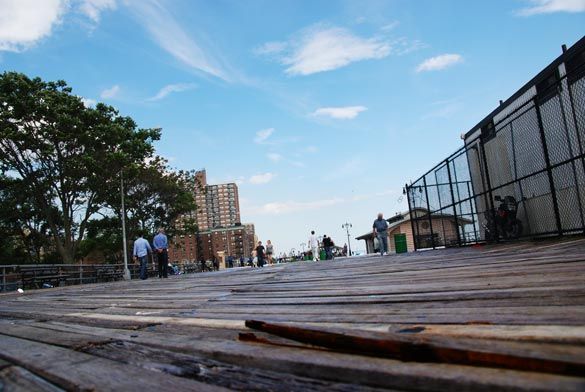Concrete Boardwalk Better For Storms, Says Sandy Recovery Head

The head of the New York City Office of Recovery and Resiliency is getting behind the Bloomberg-era plan to replace the Riegelmann Boardwalk’s wooden slats with concrete, saying that concrete fared better in Superstorm Sandy.
Recovery chief Daniel Zarrilli testified before the City Council last Thursday, telling them that the choice of concrete was a “sound” decision since it performs better in storms.
He added that the de Blasio administration will continue to replace the wooden boards with concrete going forward.
Bloomberg made the decision to replace the boardwalk with concrete after instituting a citywide ban on tropical hardwood in public projects, the material the boardwalk, as well as other fixtures like benches, have historically been made of. It has been fought for several years by locals who want to see the iconic wood stay, and they even filed suit against the city in 2012. Several compromises were sought, including using alternate wood materials, plastic and a combination of all three – although the city made clear its preference for concrete.
But the announcement that the new administration will stick with the plan because it performed well in Sandy is sure to be challenged by critics. In the wake of the storm, locals said that the concrete allowed sand to pile up on the boardwalk, and also served as a less effective buffer protecting the community from the flooding. They also say the concrete accelerates erosion and is less effective at drainage during storms.
The two councilmembers whose districts overlap the boardwalk, Chaim Deutsch and Mark Treyger, both support using wood.



